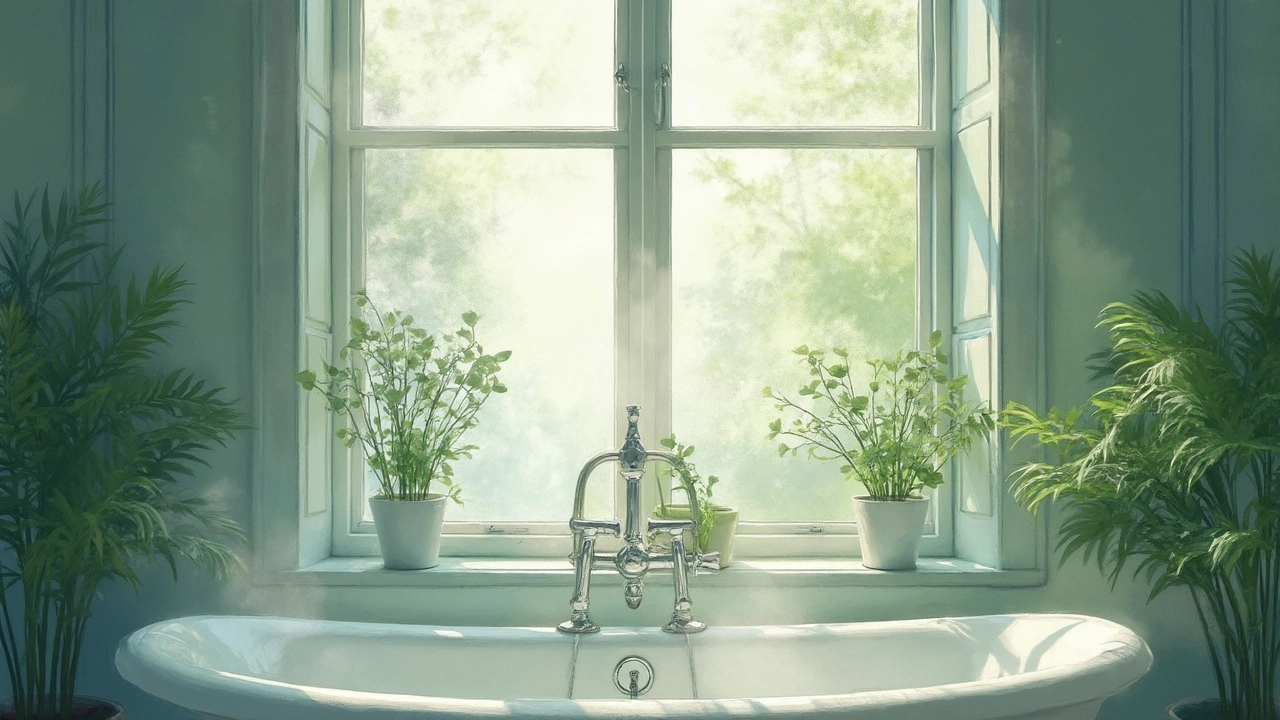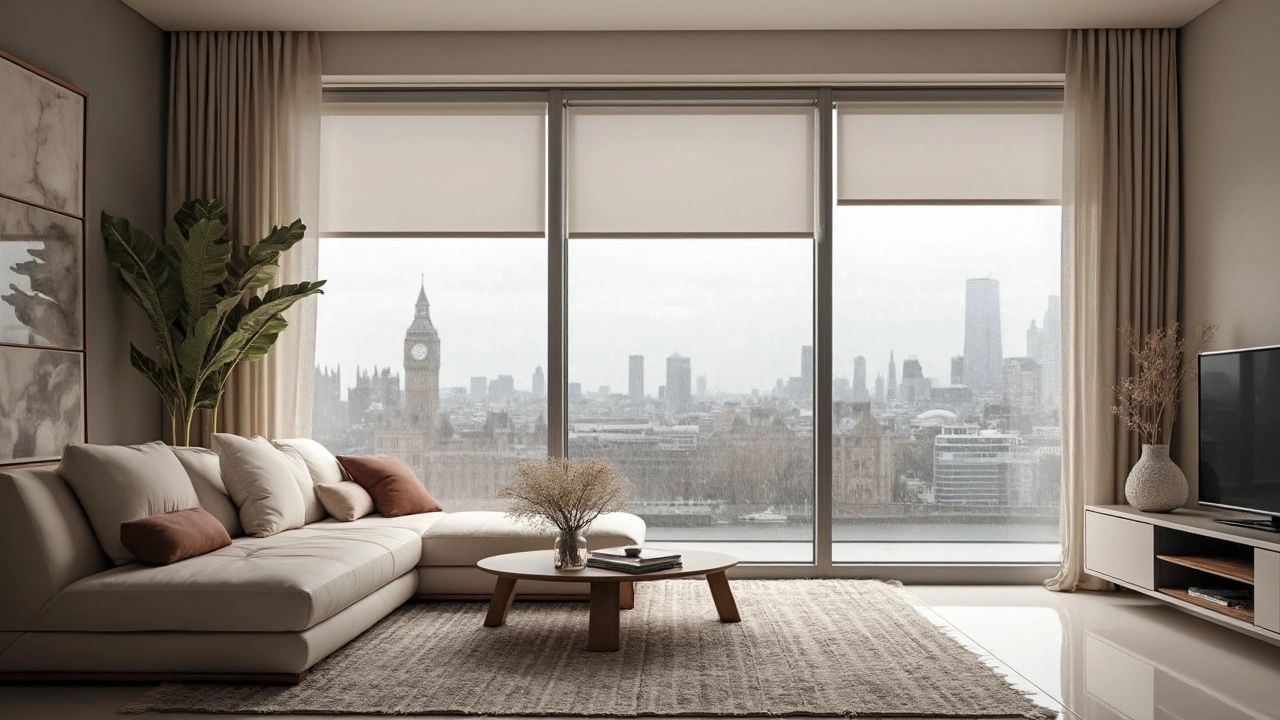Drapes can totally change how a room feels, but they just aren’t a smart pick everywhere. There are times when hanging those heavy fabrics will waste your money, your patience, and even your space. Seriously—some rooms get stuffy, look cramped, or become awkward to clean once drapes go up.
Ever try to wedge drapes into a tiny bathroom? All you get is soggy fabric, mold, and a cleaning headache. And in kitchens, drapes catch more than light—they grab every bit of grease and smell floating by. There’s a reason most chefs would rather have blinds. The point is, drapes have their limits, and forcing them where they don’t fit can make your home feel less comfy.
If you love sleek, modern style, drapes can mess up that clean look faster than a pile of dirty laundry. Sometimes less is more. Choosing the wrong window covering just because “everyone has drapes” will work against you, not for you.
- Tiny Spaces and Awkward Windows
- Kitchens, Bathrooms, and High-Moisture Zones
- Modern Minimalist Designs
- Safety and Maintenance Issues
Tiny Spaces and Awkward Windows
Here’s the thing—if your room is barely big enough to fit a bed and a dresser, drapes can turn it into a cave. Heavy curtains eat up wall space and make tiny rooms feel even smaller. It’s not just about the fabric covering the window; it’s about all the space they take up when opened, too. If your window is jammed in a corner, drapes may never hang right, and you’ll end up wrestling with them just to get some sunlight.
Let’s talk about awkward windows—think bay windows, angled ceilings, or windows that butt up against built-in shelves. Fitting drapes onto these can be harder than putting together flat-pack furniture with no instructions. Standard curtain rods often don’t work, and custom solutions get pricey fast. That’s why you’ll see folks choosing smart alternatives, like:
- Roman shades – They snug right against the glass and don’t gobble up space.
- Roller blinds – Super low-profile, and you can find moisture-resistant ones for humid spots.
- Café curtains – Perfect for privacy while still letting in light (hello, breakfast nook windows!).
Check out this quick comparison of depth taken up by different window coverings:
| Window Covering | Typical Depth Needed |
|---|---|
| Drapes | 6"–12" |
| Roman/Roller Shade | 2"–3" |
| Blinds | 2"–4" |
If closet doors or furniture are close to your window, tight-fitted options are honestly a lifesaver. There’s a reason why small-space designers almost never suggest drapes for cramped bedrooms or odd window spots. It’s about keeping the room open, accessible, and easy to use—without the hassle of fabric bunching up where you need to move.
Kitchens, Bathrooms, and High-Moisture Zones
If you’re thinking about drapes for your kitchen or bathroom, hold up. These rooms get steamy and damp all the time, and that’s the fastest way to ruin fabric. Mold and mildew love to settle into thick material, especially if it’s hanging by the sink or shower. That’s why using drapes in these spots is usually a bad idea.
In kitchens, drapes are a magnet for cooking smells, splatters, and even stray grease. The fabric will start to look dingy before you know it, and it's hardly ever practical to chuck those things in the wash every week. Most people go for blinds, shutters, or even washable roller shades instead—you just wipe them down, and you’re good to go. It’s a fact that households with drapes in the kitchen clean window treatments nearly twice as often compared to homes with blinds, which is just extra work nobody needs.
Bathrooms take moisture to the next level. Constant humidity means drapes stay damp, inviting all sorts of nasty growth. If you have a small bathroom, hanging long fabric will quickly feel crowded, and it can become a tripping hazard, too. For window privacy, consider frosted glass or compact, moisture-proof blinds.
- Avoid using drapes over kitchen sinks or near stove tops.
- Look for materials labeled “moisture-resistant” if you need window coverage for these spaces.
- Opt for hard-surface window treatments that can be wiped clean easily.
- Use roller shades, café curtains, or short blinds for a simple, sanitary fix.
Below is a quick look at the most common window coverings in high-moisture areas:
| Room | Best Option | Why Avoid Drapes? |
|---|---|---|
| Kitchen | Blinds, roller shades | Grease, smells, stains |
| Bathroom | Moisture-proof blinds, frosted glass | Humidity, mold, safety hazard |
The bottom line: In these zones, skip the drapes and pick something made to handle the chaos.

Modern Minimalist Designs
Minimalism is all about clean lines, open spaces, and zero distractions. If you're after this style, drapes can feel heavy and out of place. A lot of modern homes skip window fabrics altogether or go with super low-profile options like hidden roller shades or simple blinds. The goal? Let in more light and keep the room feeling fresh, not cluttered.
Most interior designers recommend avoiding bulky window treatments for minimalist rooms. According to a 2023 survey by Houzz, 68% of homeowners who redid their living rooms in a modern style chose something other than drapes. They wanted more sunlight and less stuff getting in the way.
- Drapes add extra layers that break up those crisp, straight lines that minimalism thrives on.
- They need rods, hooks, and brackets—extra hardware that shows up when you're trying to keep things bare and simple.
- Fabric folds and gathers can make a space look busier—totally against the less-is-more mood.
Try these instead if you want that minimalist look:
- Flat-panel roller shades
- Simple Venetian or vertical blinds
- Frosted glass for privacy without any fabric at all
- Sheer panels in one crisp color and with no ruffles or embellishments
Rooms with clean designs feel bigger and more open. You want your eyes to go straight to the view, not to a puddle of fabric in the corner. Minimalism and drapes just don’t get along well—save those lush curtains for when the vibe needs a little drama, not pure simplicity.
Safety and Maintenance Issues
Let’s be honest—those fancy drapes aren’t worth the hassle if they become a safety risk or a cleaning nightmare. Got kids or pets? Long drapes can turn into climbing ropes or hiding spots, and before you know it, you’ve got a pulled rod or a big mess. Plus, cords and tiebacks are known hazards for small children—no one needs a trip to the ER over window decor.
Flame resistance is another thing people often forget, especially in the kitchen or near heaters. Not every fabric is safe. Polyester and cotton might look good, but they can catch fire quickly if placed too close to cooking areas or radiators. Fire safety groups have flagged this again and again, so don’t ignore it. Another place drapes become an issue is for those with allergies or asthma. Heavy drapes collect dust, pet hair, and all sorts of allergens. According to the American Academy of Allergy, Asthma & Immunology, fabric window treatments can be a major source of sneaky allergens, especially if you don’t wash them regularly.
Cleaning is no picnic either. Forget tossing those big, lined panels in the home washer—they often need dry cleaning, which adds up fast. Ever tried rehanging giant wet drapes? It’s more pain than it’s worth. Here are some safety and maintenance downsides to using drapes:
- Difficult for people with allergies—hard to clean and collect dust fast
- High risk around kids and pets—tripping, tangling, and climbing hazards
- Some fabrics are fire hazards, especially near stoves or heaters
- Expensive and time-consuming to clean
If you want to avoid these messes, stick to easy-lift blinds, roller shades, or shutters in spots where safety and hassle-free cleaning matter most. They don’t just look sharp—they’ll save you a ton of worries and weekend chores.
 EN
EN
 HR
HR
 AR
AR

